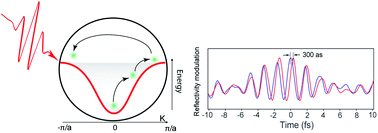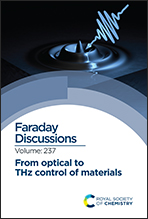Attosecond electronic delay response in dielectric materials
Abstract
The advancement in the attosecond field and the generation of XUV attosecond pulses has enabled the study of electron dynamics in the solid-state by high harmonic generation spectroscopy. Here, we introduce new all-optical attosecond metrology to study the light-field induced electron dynamics in dielectric systems. This new methodology is based on the phase transition of a dielectric material due to its interaction with a strong light field. Hence, the charge carriers undergo an inter- and intraband transition, causing a modification in the electronic structure, dielectric constant, and optical properties of the dielectric system. Consequently, the dielectric material experiences an adiabatic semi-metal phase transition due to the strong polarizability. Therefore, the reflectivity of the dielectric system changes, following the shape of the pump field. Accordingly, the time-resolved reflectivity change measurement provides direct access to the phase transition and the related electronic dynamics of the system in real-time. In the reported experiment, a strong light field (pump pulse) induces the phase transition and modifies the fused silica sample’s reflectivity, which is probed by another weak light field (probe pulse). The reflected probe beam spectrum is acquired as a function of the time delay between the pump and probe pulses. This measurement shows that the real-time phase transition dynamic (and reflectivity change) follows the pump field shape. Moreover, the reflectivity measurements have been recorded at different pump field strengths performed under the same conditions. The reflectivity trace shows a retardation phase delay at a higher driver field strength. The delay response—retrieved from the recorded reflectivity traces—is in the order of a few hundred attoseconds. In addition, the results show that the delay response monotonically increases as the trigger field escalates. Furthermore, the reflectivity measurements have been acquired for another dielectric system (CaF2). The electronic delay response shows the same linear behavior increase as that of the SiO2 system. This work establishes a universal new attosecond metrology for measuring the electron dynamics and delay response in different materials.

- This article is part of the themed collection: From optical to THz control of materials


 Please wait while we load your content...
Please wait while we load your content...